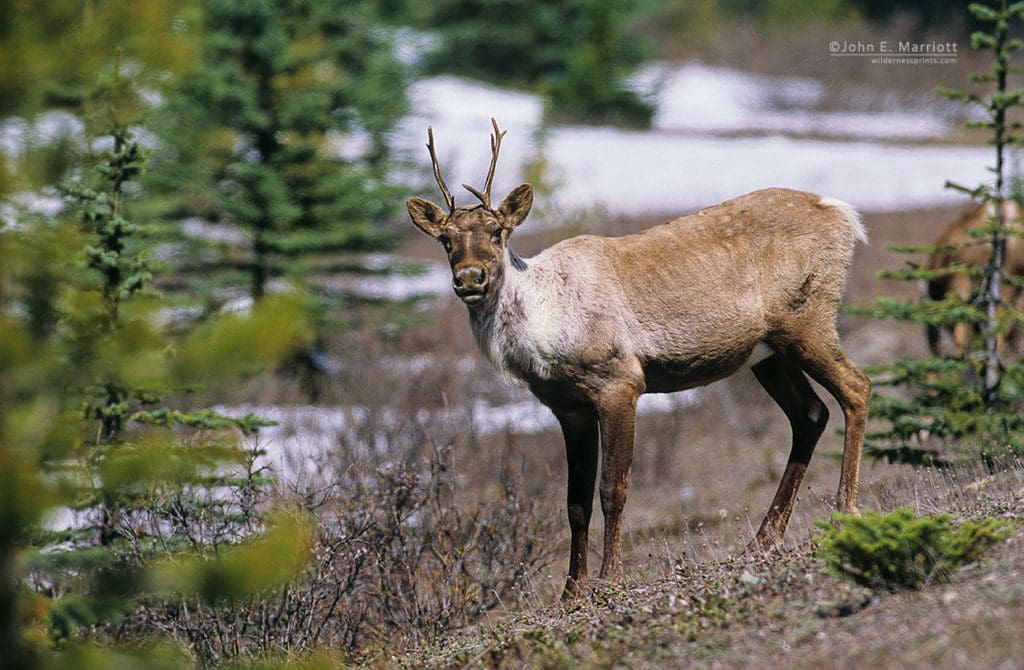Addressing habitat loss and disturbances for caribou in Alberta and British Columbia urged
Recently Parks Canada released a report and expert scientific review about whether conservation breeding can recover critically low numbers of caribou in Jasper National Park. This is coupled with an announcement reviewing caribou habitat winter access for 2021-22 to ensure Parks Canada’s efforts are focused on what is “most effective”.
Alberta Wilderness Association (AWA), Canadian Parks and Wilderness Society (CPAWS) Northern Alberta Chapter, David Suzuki Foundation and Yellowstone to Yukon Conservation Initiative (Y2Y) acknowledge the depth of technical analysis that went into evaluating a conservation breeding program.
At the same time, the groups ask Parks Canada to use a precautionary approach to manage human access in south Jasper caribou ranges to ensure the near-term survival of as many caribou as possible, while conservation breeding is further reviewed.
“Successfully recovering Jasper’s caribou means considering the big picture of conservation, inside and outside protected areas,” says Dr. Aerin Jacob, Y2Y conservation scientist who participated in the scientific review. “Experts in the scientific review emphasized reducing disturbance from people, improving connectivity to other herds and habitat, and habitat loss outside the park.”
“We welcome a re-assessment of human winter access in Jasper caribou habitat based upon Parks Canada’s obligations to protect species at risk and ecological integrity,” says Carolyn Campbell of AWA. “We also continue to seek more precautionary management of summer and fall recreation in the Tonquin range, and of the Maligne range to enable caribou re-occupation.”
“Captive breeding programs are often seen as a reason to celebrate, but they’re really the last stop in a long series of human failures to protect at-risk species,” says Rachel Plotkin of David Suzuki Foundation. “Parks Canada needs to effectively protect habitat for current caribou populations before captive breeding decisions are made.”
“Conservation breeding focuses on having more caribou in the future, but we cannot forget about doing what’s best for the caribou that are surviving there right now or having healthy habitat for those future caribou to re-occupy,” says Gillian Chow-Fraser of CPAWS Northern Alberta. “This means addressing existing ways in which caribou critical habitat is permitted access from visitors and expanding tourism and recreation interests. Evidence from Jasper’s recently-extirpated Maligne caribou herd, as well as other available scientific research, indicates more precautionary access management should occur in Tonquin caribou range.”
The expert reviewers’ strong support for using conservation breeding as a way to increase caribou numbers in Jasper National Park underlines that the past mistakes in Jasper’s wildlife and human access management in caribou ranges should not be repeated. For population connectivity, to ensure these mountain caribou thrive well into the future, it is also urgent to halt the ongoing loss of intact caribou habitat in Alberta and B.C.
In the 1960s, southern Jasper National Park had hundreds of caribou. Today there are fewer than 60 animals left. One herd is gone and two others are at such low numbers that they might not last much longer. The Tonquin herd is the largest herd left with just 45 caribou, including no more than 10 breeding females.


